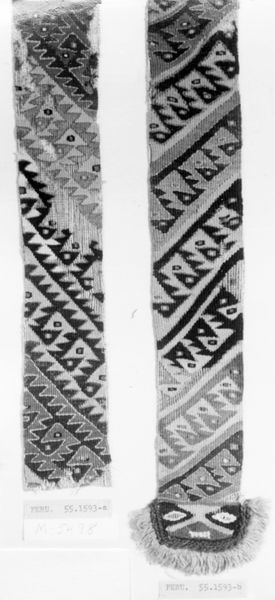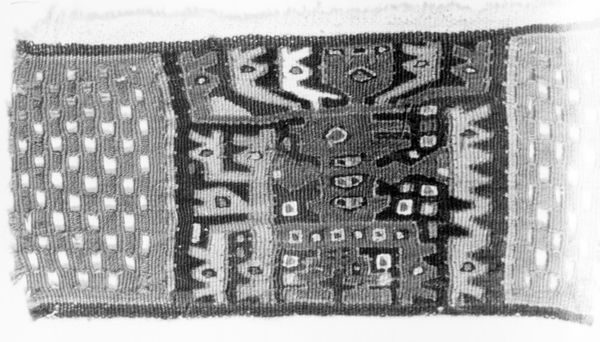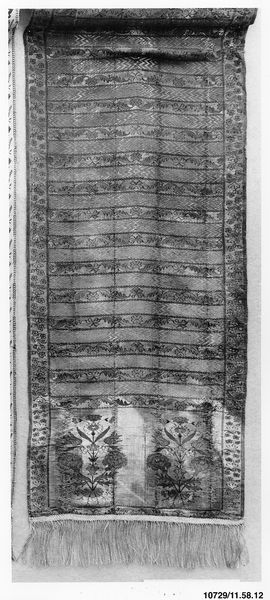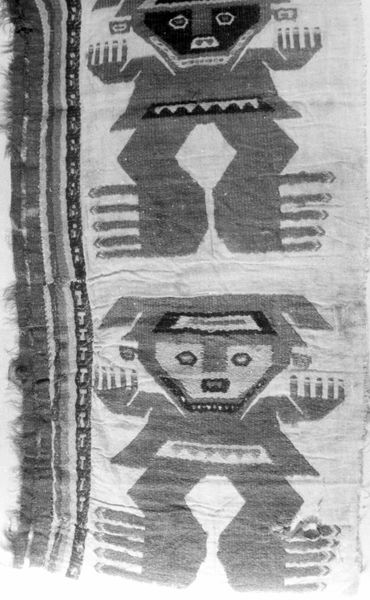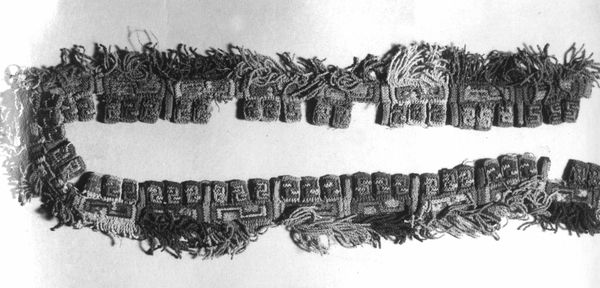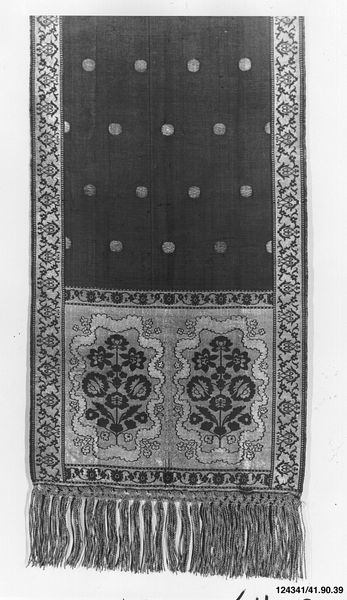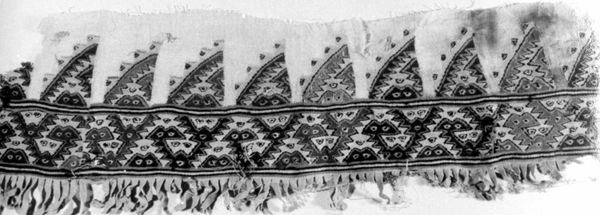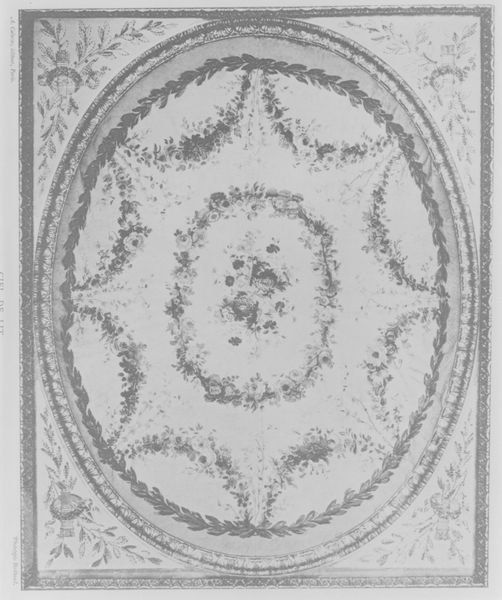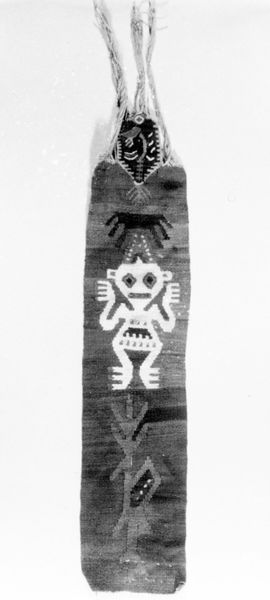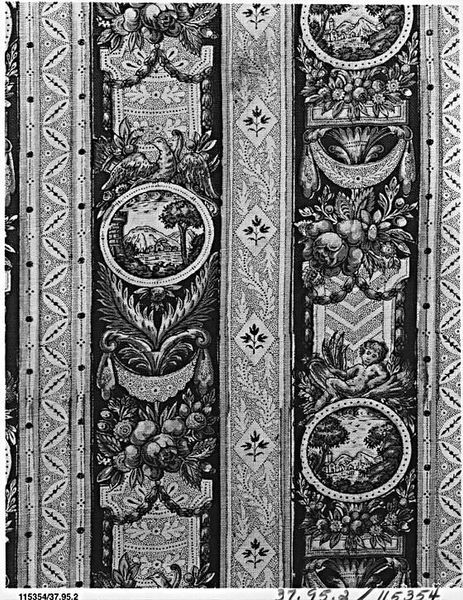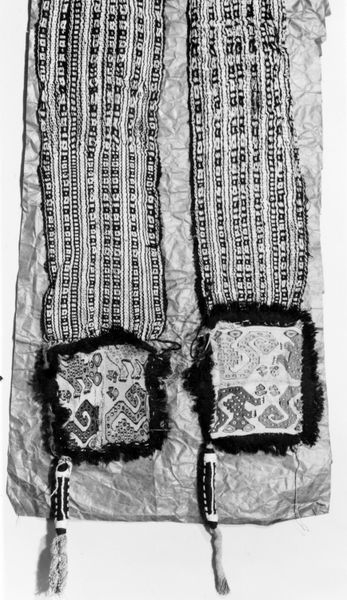
fibre-art, weaving, textile
#
fibre-art
#
weaving
#
textile
#
geometric
#
indigenous-americas
Dimensions: 27.3 × 14 cm (10 3/4 × 5 1/2 in.)
Copyright: Public Domain
Editor: This woven piece, titled *Fragment (Border)*, dates back to sometime between 1250 and 1470. It’s attributed to the Chimú culture, and it's currently at the Art Institute of Chicago. Looking at the repeated figures, there is something both ordered and unsettling. What do you see in this piece, particularly given its fragmented state? Curator: The very fact that this is a fragment speaks volumes. We're encountering a remnant of a complex society, forcing us to consider what's been lost, not only physically but also culturally. The geometric figures might appear abstract, but within the Chimú context, they held symbolic meaning. Consider how textile production was often deeply entwined with social status, ritual practices, and power structures. Who was creating these textiles, and what messages were they weaving into them? Editor: So the textile is not just decoration but also a form of communication and perhaps resistance? Curator: Absolutely. When we think about colonization and cultural erasure, we can see these surviving fragments as acts of defiance, quiet assertions of identity in the face of immense pressure. It pushes us to question the narratives of the victors that often dominate art history. The figures, repeated and yet subtly varied, could represent deities, ancestors, or even social roles. This piece becomes a site of active interpretation rather than passive viewing. The incomplete nature allows the viewer to question what was included. Editor: That's a powerful way to reframe our understanding. Seeing this fragment as a testament to resilience and resistance gives it a whole new layer of meaning. Curator: Precisely. And it prompts us to reflect on our own roles as viewers and interpreters, always mindful of the historical and social contexts that shape both the creation and reception of art. By centering narratives of marginalized voices we expand the space art occupies and give power back to the artist. Editor: I'm starting to appreciate that art is so much more than what is apparent. Curator: Always, with new questions waiting to be discovered.
Comments
No comments
Be the first to comment and join the conversation on the ultimate creative platform.
